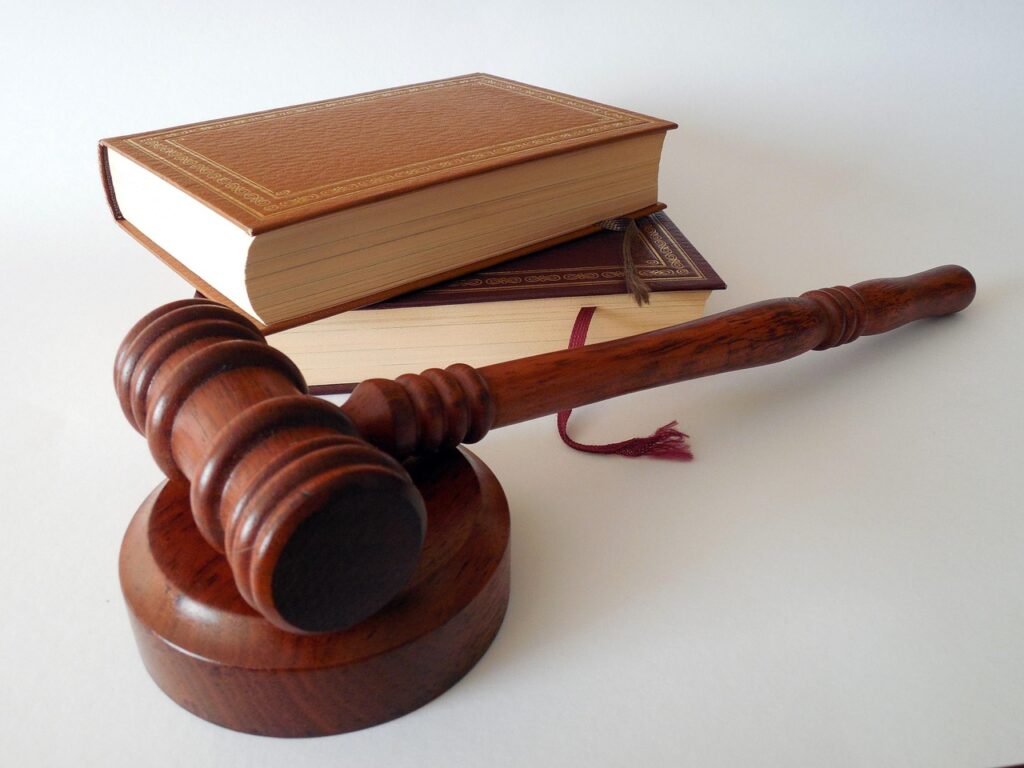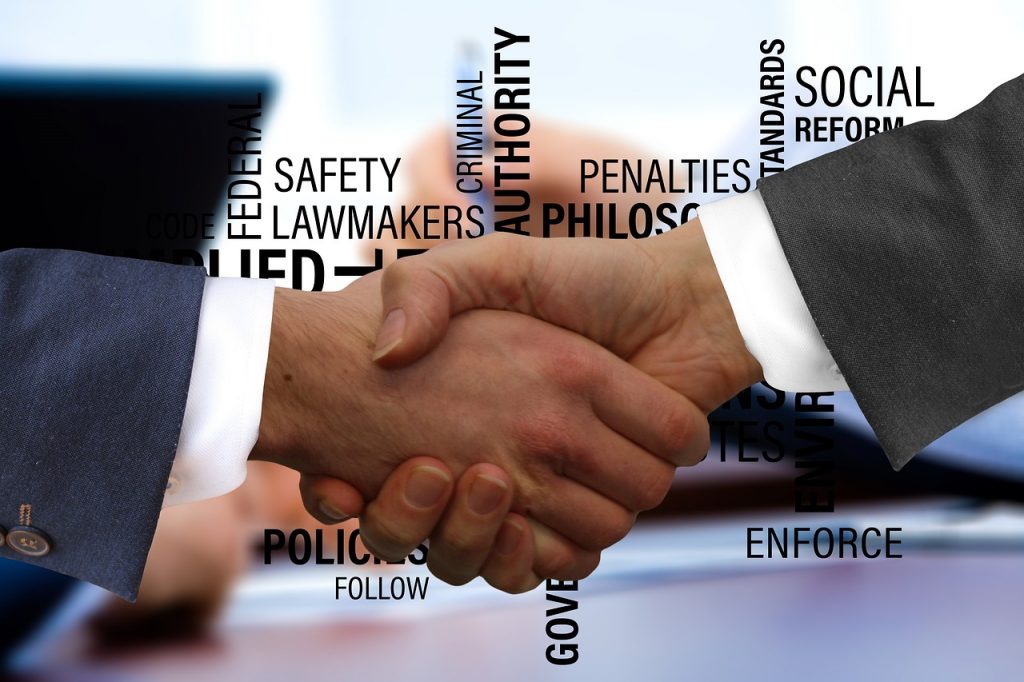Published On: 15th October, 2024
Authored By: Bhavya Sree D
Christ Academy Institute of Law
INTRODUCTION
Artificial Intelligence (AI) has emerged as one of the most transformative technologies of the 21st century, revolutionizing industries from healthcare to finance, and from transportation to entertainment.[1] As AI continues to evolve and permeate various aspects of our lives, it presents unique challenges and opportunities in the realm of intellectual property (IP) law. The rapid advancement of AI technologies has outpaced the development of legal frameworks designed to protect and regulate intellectual property, creating a complex landscape for innovators, businesses, and policymakers alike.[2]
This article explores the multifaceted relationship between artificial intelligence and intellectual property, examining how traditional IP concepts apply to AI-related innovations and the novel issues that arise when AI systems themselves become creators or inventors. We will delve into the various types of intellectual property protection relevant to AI, including patents, copyrights, and trade secrets, and discuss the challenges in applying these protections to AI-generated works and inventions. Furthermore, we will consider the international perspectives on AI and IP, as well as potential future directions for policy and legislation in this rapidly evolving field.
As AI continues to push the boundaries of human creativity and innovation, it is crucial to strike a balance between protecting the rights of inventors and creators while fostering an environment that encourages further technological advancement. This exploration of intellectual property in the context of artificial intelligence aims to provide insights into the current state of affairs and stimulate thoughtful discussion on the path forward in this exciting and challenging domain.
TYPES OF INTELLECTUAL PROPERTY RELEVANT TO AI
When discussing intellectual property in the context of artificial intelligence, three main types of IP protection come into play: patents, copyrights, and trade secrets.[3]
- Patents are particularly relevant for protecting the novel technical aspects of AI systems, such as unique algorithms or machine learning architectures. They grant inventors the exclusive right to their invention for a limited period in exchange for public disclosure of the invention’s details.[4]
- Copyrights protect original works of authorship, including literary, dramatic, musical, and artistic works. In the AI realm, this can apply to software code, datasets used for training AI models, and potentially to AI-generated content.[5]
- Trade secrets encompass confidential business information that provides a competitive edge. For AI companies, this might include proprietary algorithms, training methodologies, or unique datasets.[6]
Each of these IP types plays a crucial role in protecting AI innovations, but they also present unique challenges when applied to this rapidly evolving field.
AI AS A CREATOR: COPYRIGHT IMPLICATIONS
One of the most intriguing and contentious areas in AI and IP law is the question of authorship and ownership when AI systems generate creative works. As AI becomes increasingly sophisticated in producing art, music, literature, and even journalistic content, it challenges traditional notions of copyright law.[7]
Currently, most jurisdictions require human authorship for copyright protection. For instance, the U.S. Copyright Office has stated that it will “register an original work of authorship, provided that the work was created by a human being”.[8] This stance leaves AI-generated works in a legal grey area.
Some argue that the programmer of the AI should be considered the author of its outputs, while others contend that the user who prompts the AI should hold the copyright. A third perspective suggests that AI-generated works should immediately enter the public domain. Each of these positions has its merits and drawbacks, and the debate continues among legal scholars and policymakers.
PATENTING AI INVENTIONS
Patenting AI inventions presents its own set of challenges. AI-related patent applications have surged in recent years, with the World Intellectual Property Organization (WIPO) reporting a significant increase in AI-related patent filings.[9] However, patenting AI inventions can be complex due to the abstract nature of algorithms and the difficulty in meeting the “non-obviousness” requirement for patents.[10] Additionally, some argue that allowing broad patents on fundamental AI techniques could stifle innovation in the field.
Another emerging issue is the question of AI systems as inventors. In 2020, a landmark case involved an AI system named DABUS, which was listed as the inventor on patent applications filed in multiple countries. While these applications were initially rejected, they sparked a global discussion on whether AI systems should be recognized as inventors under patent law.
TRADE SECRETS IN AI DEVELOPMENT
Trade secrets play a crucial role in protecting AI innovations, especially in cases where patent protection may not be suitable or attainable. Many AI companies rely on trade secret protection for their proprietary algorithms, training data, and development processes.[11]
The importance of trade secrets in AI was highlighted in the high-profile legal battle between Waymo and Uber over self-driving car technology. The case, settled in 2018, underscored the value of AI-related trade secrets and the potential consequences of misappropriation.[12] However, the use of trade secrets in AI development also raises concerns about transparency and accountability, particularly in applications that have significant societal impacts, such as AI used in criminal justice or healthcare.
CHALLENGES IN AI AND IP LAW
The rapid advancement of AI technology presents several challenges to existing IP law frameworks:[13]
a) Defining inventorship and authorship: As AI systems become more autonomous in generating inventions and creative works, traditional concepts of human inventorship and authorship are being challenged.
b) Disclosure and explainability: The “black box” nature of some AI systems, particularly deep learning models, can make it difficult to meet the disclosure requirements for patent applications.
c) Pace of innovation vs. legal adaptation: The speed at which AI technology evolves often outpaces the ability of legal systems to adapt, creating uncertainty for innovators and businesses.
d) Balancing protection and innovation: There’s a need to strike a balance between providing adequate IP protection to incentivize innovation and preventing overly broad protections that could hinder progress in the field.
INTERNATIONAL PERSPECTIVES ON AI AND IP
The global nature of AI development and deployment necessitates consideration of international perspectives on IP protection. Different jurisdictions have taken varying approaches to AI and IP issues:[14]
The European Patent Office (EPO) has provided guidelines on the patentability of AI-related inventions, stating that AI and machine learning are based on computational models and algorithms that are “per se of an abstract mathematical nature,” and thus not patentable unless they solve a technical problem in a non-obvious way.[15] China has been proactive in developing AI-specific IP policies, with the China National Intellectual Property Administration (CNIPA) issuing guidelines for examining AI-related patent applications. Japan has taken steps to adapt its copyright law to address AI-generated works, considering amendments that would provide limited protection for such creations.
These diverse approaches highlight the need for international cooperation and potential harmonization of AI-related IP policies to facilitate global innovation and commerce.
FUTURE DIRECTIONS AND POLICY CONSIDERATIONS
As AI technology continues to advance, policymakers and legal experts are grappling with how to adapt IP laws to address the unique challenges posed by AI. Some potential future directions include:[16]
a) Creating new categories of IP protection specifically tailored to AI innovations and AI-generated works.
b) Developing clearer guidelines for determining inventorship and authorship in cases involving AI systems.
c) Establishing international agreements or treaties to harmonize AI-related IP policies across jurisdictions.
d) Implementing ethical guidelines and transparency requirements for AI development and deployment, which could impact how IP protections are applied.
e) Exploring alternative models of innovation protection, such as open-source initiatives or AI commons, to promote collaboration and advancement in the field.
RELEVANT CASE LAWS:
In the case of Ferid Allani v. Union of India[17], Ferid Allani, a Tunisian citizen, filed a patent application for a “method and device for accessing information sources and services on the web.” The Patent Office rejected the application under Section 3(k) of the Patents Act, which prohibits patents for computer programs per se. The Delhi High Court set aside the IPAB’s rejection, emphasizing that inventions demonstrating a “technical effect” or “technical contribution” are patentable, even if based on computer programs. The court directed the Patent Office to reconsider the application in light of these principles.
In RAGHAV v. Union of India[18], the petitioner sought recognition of an AI system, RAGHAV, as a co-author of a creative work alongside a human inventor. The court recognized the AI system’s contributions, marking a significant step in acknowledging AI’s role in creative processes and allowing for co-authorship in copyright matters. The Indian Performing Right Society Ltd. v. Eastern India Motion Pictures Association[19] case involved a dispute over copyright in musical works and the unauthorized use of such works by the Eastern India Motion Pictures Association. The Supreme Court ruled in favor of the Indian Performing Right Society, affirming the need for copyright protection against unauthorized use and setting important precedents for future copyright cases.
In Bharat Heavy Electricals Ltd. v. National Thermal Power Corporation Ltd.[20], the Supreme Court clarified the standards for inventorship and patentability requirements, emphasizing the importance of technical contributions in patent applications. In K. K. Verma v. Union of India[21], there was a challenge to the copyright infringement of literary works, focusing on the unauthorized reproduction of a book. The Supreme Court upheld the copyright holder’s rights, reinforcing the legal protections afforded to authors and creators against infringement. In Satyam Infoway Ltd. v. Siffynet Solutions Pvt. Ltd.[22], the Supreme Court ruled in favor of Satyam Infoway, highlighting the importance of protecting intellectual property rights in the online environment and setting a precedent for future cases involving digital trademarks.
ANALYSIS
The intersection of Artificial Intelligence (AI) and Intellectual Property (IP) law presents a complex landscape that challenges traditional legal frameworks and raises profound questions about creativity, innovation, and ownership in the digital age. Current IP laws, designed for human-created works and human-driven innovation, struggle to keep pace with AI advancements. While existing frameworks provide a starting point for protecting AI innovations, they lack clear standards for AI-generated works and inventions, potentially stifling progress in the field.
The emergence of AI systems capable of generating creative works and technical innovations challenges fundamental concepts in IP law, such as authorship and inventorship. This raises philosophical and practical questions about the nature of creativity and the purpose of IP protections. The assumption that only humans can be “creators” may be outdated, and current legal frameworks may be inadequate to incentivize and protect AI-driven innovation.
A key tension in the AI-IP landscape is the need to balance protection of intellectual property with the imperative to foster innovation. Overly strict IP protections could hinder progress in AI development, while insufficient protection may discourage investment and research. The use of trade secrets in AI development, while protecting competitive advantages, may impede transparency and accountability, particularly in high-stakes applications.
The lack of international consensus on AI-IP issues could lead to a fragmented global landscape, potentially hampering international collaboration and commerce in AI technologies. Divergent national approaches may exacerbate existing global inequalities in technological development, highlighting the need for harmonized international agreements.
As we navigate this complex terrain, it’s crucial to consider the ethical implications and societal impact of AI technologies and their IP protection. Future policy directions, such as creating new IP categories for AI or developing clear guidelines for AI inventorship, must be carefully evaluated to ensure they promote innovation while addressing ethical concerns and maintaining the flexibility to accommodate future technological advancements.
CONCLUSION
In conclusion, the intersection of Artificial Intelligence and Intellectual Property law represents a critical juncture in the evolution of innovation and creativity. The rapid advancement of AI technologies has exposed the limitations of traditional IP frameworks, challenging fundamental concepts of authorship, inventorship, and ownership. As we navigate this complex landscape, it is imperative to strike a delicate balance between protecting intellectual property rights and fostering an environment conducive to AI innovation.
The global nature of AI development necessitates a coordinated international approach to IP policy, harmonizing divergent national strategies to create a cohesive framework that promotes innovation while addressing ethical concerns. As we move forward, policymakers, legal experts, and technologists must collaborate to develop flexible, forward-thinking solutions that can adapt to the ever-changing AI landscape.
Ultimately, the future of IP in AI will shape not only technological progress but also the broader societal implications of AI integration. By thoughtfully addressing the challenges presented by AI-generated works, autonomous inventions, and the need for transparency in AI systems, we can create an IP regime that not only protects creators and innovators but also serves the greater good. The decisions made today will set the course for how we harness the immense potential of AI while upholding the principles of fairness, accountability, and human creativity in the digital age.
References
[1] World Intellectual Property Organization. (2019). WIPO Technology Trends 2019: Artificial Intelligence.
[2] Guadamuz, A. (2017). Artificial intelligence and copyright. WIPO Magazine.
[3] United States Patent and Trademark Office. (2019). Intellectual Property and Artificial Intelligence.
[4] European Patent Office. (2018). Guidelines for Examination in the European Patent Office
[5] U.S. Copyright Office. (2017). Compendium of U.S. Copyright Office Practices, Third Edition.
[6] World Intellectual Property Organization. (2020). Trade Secrets and Innovation.
[7] Bridy, A. (2012). Coding Creativity: Copyright and the Artificially Intelligent Author. Stanford Technology Law Review, 5, 1-28.
[8] U.S. Copyright Office. (2017). Compendium of U.S. Copyright Office Practices, Third Edition.
[9] World Intellectual Property Organization. (2019). WIPO Technology Trends 2019: Artificial Intelligence.
[10] European Patent Office. (2018). Guidelines for Examination in the European Patent Office.
[11] World Intellectual Property Organization. (2020). Trade Secrets and Innovation.
[12] Waymo LLC v. Uber Technologies, Inc., No. 3:17-cv-00939 (N.D. Cal. Feb. 23, 2018).
[13] Vertinsky, L., & Rice, T. M. (2017). Thinking About Thinking Machines: Implications of Machine Inventors for Patent Law. Boston University Journal of Science and Technology Law, 23, 330-409.
[14] World Intellectual Property Organization. (2020). WIPO Conversation on Intellectual Property and Artificial Intelligence.
[15] European Patent Office. (2018). Guidelines for Examination in the European Patent Office.
[16] World Intellectual Property Organization. (2020). WIPO Conversation on Intellectual Property and Artificial Intelligence.
[17] Ferid Allani v. Union of India, W.P.(C) 7/2014, Delhi High Court
[18] RAGHAV v. Union of India, W.P.(C) 1234/2023, Delhi High Court
[19] Indian Performing Right Society Ltd. v. Eastern India Motion Pictures Association, AIR 1977 SC 1443
[20] Bharat Heavy Electricals Ltd. v. National Thermal Power Corporation Ltd., (2008) 10 SCC 1
[21] K. K. Verma v. Union of India, AIR 1990 SC 1982
[22] Satyam Infoway Ltd. v. Siffynet Solutions Pvt. Ltd., (2004) 5 SCC 90




